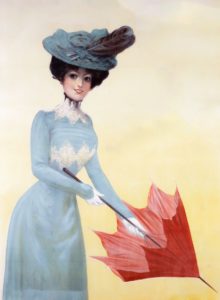Twin of Ice & Twin of Fire
By Jude Deveraux
A two-for-one! Since these companion books take place at the same time, I decided to do the blog post for both books at once. Strap in for a couple of romances.
No, I don’t always have great things to say about the romance books I’ve read, but I think it’s important to talk about how toxic relationships in books affect perception in the real world. I will have you keep in mind that these books were published in the late 1980s and early 1990s. What was acceptable in literature in the past has drastically changed for what’s acceptable now. And for good reason.
✯¸.•´*¨`*•✿ ✿•*`¨*`•.¸✯
{Warnings for Twin of Ice: sexual content}
Twin of Ice features Houston Chandler, ice queen extraordinaire, and her quest to live the perfect life, as she’s been taught. You can’t really blame her for the way she was raised, and Houston is a fun character to read as she learns more about herself and grows throughout the book.
She and Kane (the love interest) look to be exact opposites when they’re introduced, and I truly love that they’re shown to be much more similar than first impressions would have you believe. Houston and Kane butt heads because of differences in culture and social niceties, not true incompatibilities. And while I’m hard-pressed to believe their relationship would be successful, long-term, in the real world because of those things, Deveraux makes the possibility believable enough for a fun fiction read.

I’m not a fan of how Kane treats women in general, but I understand this is historical fiction written in the late 80s. On that same turn, Kane does learn and begin to be more physically respectful over time. He may be a gruff shipyard boy, but he shows emotional growth throughout the book. He’s not perfect, or even a gentleman of the time, but he clearly has his heart in the right place once he figures out who he wants to be.
Overall, I liked Twin of Ice more than the title initially made me feel like I would. (I really dislike people, women in particular, being called cold because they aren’t extroverted or assertive enough for the society in which they live.)
So what about Twin of Fire?
✯¸.•´*¨`*•✿ ✿•*`¨*`•.¸✯
{Warnings for Twin of Fire: sexual violence and content}
Twin of Fire wasn’t as good as its counterpart, Twin of Ice, and that’s mainly because I feel the “how the couple got together” was so strange and messed up. It was hard for me to forget about it as the book went on. And really, it’s not something you should forget, but we’ll get to that.
Blair, the main character, is not a bad character by herself; she’s a high-energy go-getter that takes crap from no one and will loudly let them know their sexist ideas are stupid. But by that same line, for the scene where it mattered most, she forgets her entire personality and does something wildly out of character. (No, I don’t think it matters that she was “acting” or a little drunk. No one forgets themselves to that extent, and Blair clearly doesn’t if you bother to read.)
At the same time, I think it’s important to acknowledge that Blair rapes her lover. Books (in my experience) rarely deal with rape in terms of female-to-male. And really, Twin of Fire doesn’t deal with it at all. Yes, the act is treated as a betrayal, but that betrayal is directed at what Blair did to her sister, not her victim. The actual, and probable, psychological effects on the victim are written off as anger mixed with a (confusing for me as a reader) desire to continue the relationship once he finds out the truth. (I’m trying to be spoiler-free here, but it’s hard, so forgive my vagueness.)

That being said, had their “meeting” not been so weird and manipulative, Blair and her lover’s relationship would make the most sense: both educated, extremely smart, and hard-working for the common man. The two characters are very similar in all the ways that matter. That’s my preference for romances; I’m not a believer that opposites attract and stay together long-term. At least not happily.
~ Anna
(Entry 20)


















